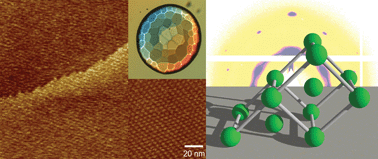Body-centered cubic phase in 3-arm star mesogens: a torsional tapping AFM and GISAXS study†
Abstract
The mode of liquid crystal (![[3 with combining macron]](https://www.rsc.org/images/entities/char_0033_0304.gif) m
m

* Corresponding authors
a Department of Physics and Astronomy, University of Sheffield, Hicks Building, Hounsfield Road, Sheffield, UK
b
Department of Materials Science and Enginerring, University of Sheffield, Mapping Street, Sheffield, UK
E-mail:
g.ungar@sheffield.ac.uk
c WCU program of Chemical Convergence for Energy & Environment, School of Chemical and Biological Engineering, Seoul National University, Seoul, Korea
d Institute of Chemistry, Chemnitz University of Technology, Straße der Nationen 62, Chemnitz, Germany
The mode of liquid crystal (![[3 with combining macron]](https://www.rsc.org/images/entities/char_0033_0304.gif) m
m

 Please wait while we load your content...
Something went wrong. Try again?
Please wait while we load your content...
Something went wrong. Try again?
C. H. M. Weber, F. Liu, X. Zeng, G. Ungar, N. Mullin, J. K. Hobbs, M. Jahr and M. Lehmann, Soft Matter, 2010, 6, 5390 DOI: 10.1039/C0SM00420K
To request permission to reproduce material from this article, please go to the Copyright Clearance Center request page.
If you are an author contributing to an RSC publication, you do not need to request permission provided correct acknowledgement is given.
If you are the author of this article, you do not need to request permission to reproduce figures and diagrams provided correct acknowledgement is given. If you want to reproduce the whole article in a third-party publication (excluding your thesis/dissertation for which permission is not required) please go to the Copyright Clearance Center request page.
Read more about how to correctly acknowledge RSC content.
 Fetching data from CrossRef.
Fetching data from CrossRef.
This may take some time to load.
Loading related content
